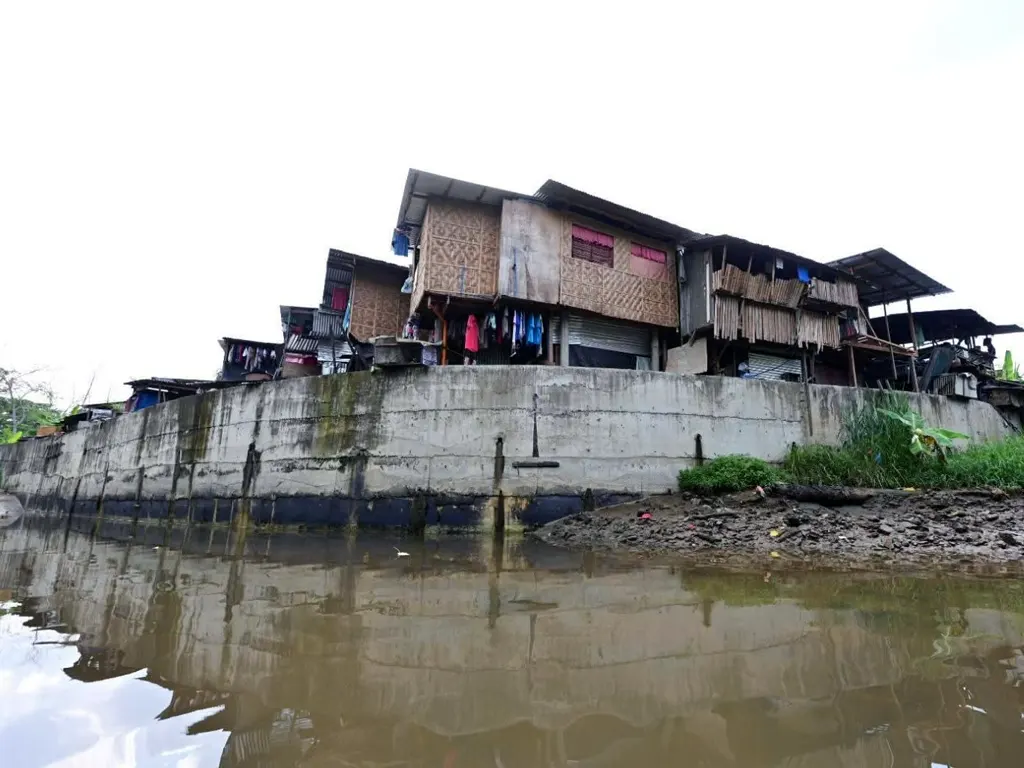
DAVAO CITY – For decades, coastal and riverside residents of Bangkal and Matina Aplaya lived in fear of rising waters. Today, those same communities point to seawalls, dikes, and flood mitigation structures as the reason they can finally sleep soundly at night — a living contradiction to critics branding Davao City’s infrastructure projects as “ghosts.”
Jarin Idao, 56, a fisherman from Muslim Village, said they used to run to the church every time heavy rains fell. “The flooding stopped when the seawall was built,” he said. “We see it. We walk on it. Even when it rains hard, the water no longer reaches our houses.”
Noria Sabai, 64, and Esnera Sadical, 53, echoed the same relief. “Kani sauna, basta mosabay ang Talomo River, Matina River ug dagat, murag 2011 na pud ang mahitabo. Karon, salamat sa seawall, dili na makasulod ang tubig,” Sadical said.
(“Before, whenever the Talomo River, Matina River, and the sea would rise together, it felt like 2011 all over again. Now, thanks to the seawall, the water no longer enters.”)
Eighty-seven-year-old Alfonso Bergado recalled how homes were swept away during the 2011 disaster. “Now, I can tend my garden without fear. Ang tubig klaro kaayo nga ginadirect na sa dike. Kinsa may moingon nga ghost project ni?” he asked.
(“The water is clearly being directed by the dike. Who would dare call this a ghost project?”)
In nearby Matina Aplaya, 50-year-old fisherman Alexander Eborde pointed to the flood structures as the reason his livelihood survived. “Before, chest-level ang tubig, ang bangka di makagawas. Karon, di na mulabaw ang tubig. We use this structure every single day. Ghost? Unsaon man nang ghost nga ginamit man namo?” he said.
(“Before, the water would reach chest level and our boats couldn’t even get out. Now, the water no longer rises that high. Ghost project? How can it be a ghost when we actually use it?”)
These testimonies came as DPWH-11 clarified that Davao City’s First District, under Rep. Paolo Duterte, received P49.8 billion from 2020 to 2022 for 710 infrastructure projects — not solely for flood control. Only P8 billion went to flood control; the rest funded “big-ticket” projects such as the Davao Coastal Road (P15.3 billion), Maa-Magtuod Flyover (P2 billion), and Ulas Viaduct (P2.7 billion).
“From 2016 to 2022, the district received P68.6 billion for 1,221 projects, and only 206 of those, worth P10.5 billion, were for flood control,” DPWH-11 spokesperson Dean Ortiz said. He emphasized that allocations were “well-monitored” and responsive to actual community needs.
Rep. Paolo Duterte, meanwhile, hit back at what he called a deliberate attempt to drag Davao into controversies to cover up anomalies elsewhere.
“Corruption is right before you, pero sige gihapon mo’g pangita sa Duterte,” Duterte said. “Stop using our family as scapegoats. Ang dapat ninyo tan-awon, kadtong ghost projects nga wala gyud makita, wala magamit, ug wala’y nakabenepisyo.”
(“Corruption is right in front of you, yet you keep looking for the Dutertes. Stop using our family as scapegoats. What you should be looking at are those ghost projects that cannot be seen, cannot be used, and benefited no one.”)
He dared fellow lawmakers to publish their own district budgets and let the people see the actual projects. “In Davao, our projects are visible, built, and used. Ang mga tao mismo nagpamatuod nga naa gyud. Sa uban, papel ra ug resibo ang makita.”
(“In Davao, our projects are visible, built, and used. The people themselves can testify that they exist. Elsewhere, what you see are just papers and receipts.”)
DPWH-11 said ongoing major projects like the Davao Coastal Road and Maa-Magtuod Flyover are nearing completion, with the latter already 82.5% finished and set to open by early 2026.
For residents who once lived through devastating floods, the debate in Manila feels far removed from reality. “We don’t need politicians to tell us kung ghost ba ni o dili,” Eborde said.
(“We don’t need politicians to tell us if this is a ghost project or not. We see it, we use it, we survive because of it.”)



